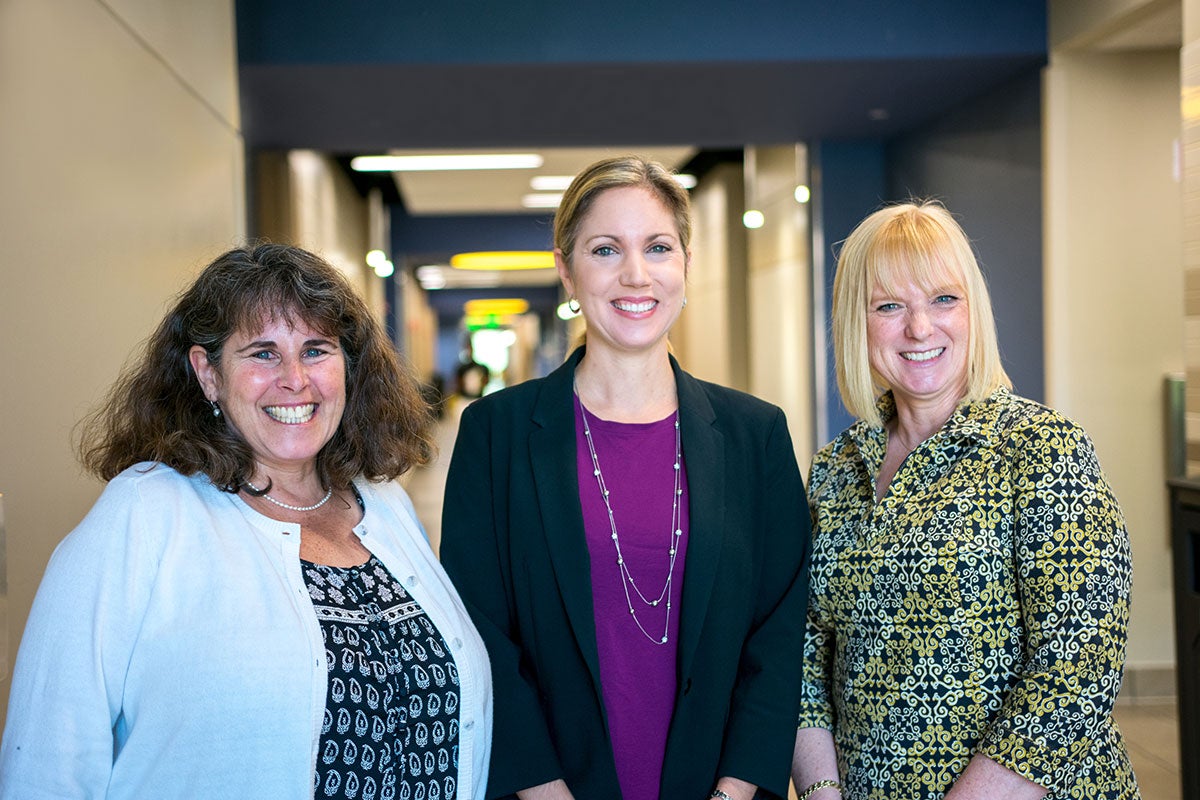An ongoing project to boost classroom student engagement through high-impact practices (HIP) recently earned one of UCF’s highest internal awards.
Called HIP Coaches, the project uses student coaches to mentor and guide fellow students through high-impact learning experiences, such as collaborative assignments and projects, undergraduate research and internships. The idea is to help faculty equip students with skills they can use whether they’re heading into the demands of graduate work or pulling together an analysis for their first job.
HIP Coaches is the idea of Pegasus Professor Linda Walters, Kimberly Schneider and Mary Tripp. Walters, a biology professor, heads the Coastal and Estuarine Ecology Lab; Schneider is an assistant dean of academic engagement and director of undergraduate research; and Tripp is an instructional specialist.
Together, they won the Marchioli Collective Impact Innovation Award, which rewards programs, initiatives and projects that help UCF achieve priority metrics from the university’s strategic plan.
“We were absolutely thrilled to receive this award. To be recognized for our work here is an honor that we feel incredibly proud of,” Schneider says.
The project dates back to 2014, when Schneider recognized a need for campuswide research opportunities. She recruited five faculty members to travel to Florida Southern College in Lakeland, Florida, and learn what other campuses are doing to bridge this gap between faculty and students involved in research. Experts recognize research as a strong high-impact practice because it deepens students’ understanding of a topic and empowers them to learn more.
“That conference gave us the gift of time,” says Tripp. “Afterwards, we were able to think independently, as well as collaboratively, to figure out how we wanted to move forward in our own classrooms. We were also thinking of ways to move UCF forward as an innovative institution.”
HIP Coaches are hand-picked by professors to assist in high-impact projects related to a course. That one-on-one attention is hard to come by in a school of more than 69,500 students, Walters notes, and it also helps professors feel engaged with students.
“It just goes to show you that a good idea can have legs if you work hard enough,” says Walters. “This is only the beginning for a program that has had such a positive outcome thus far.”




